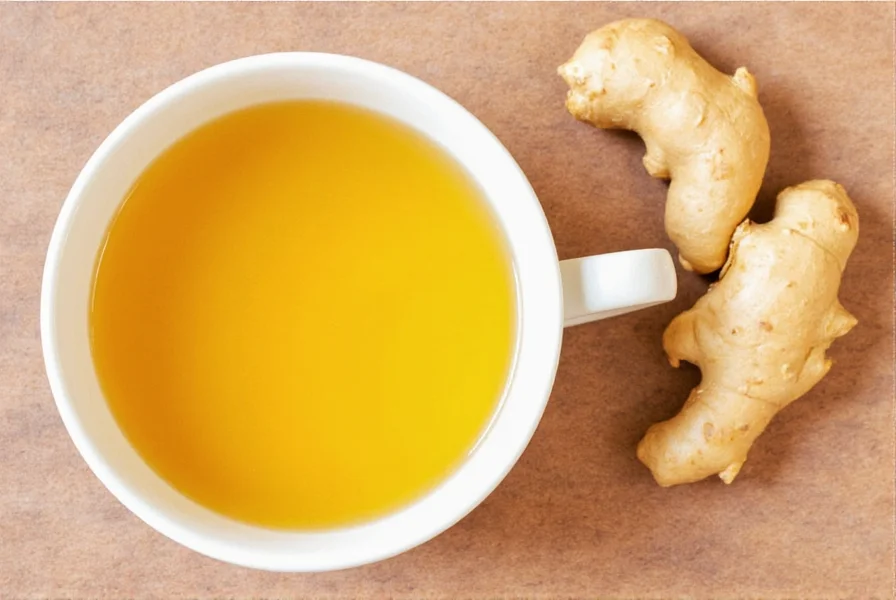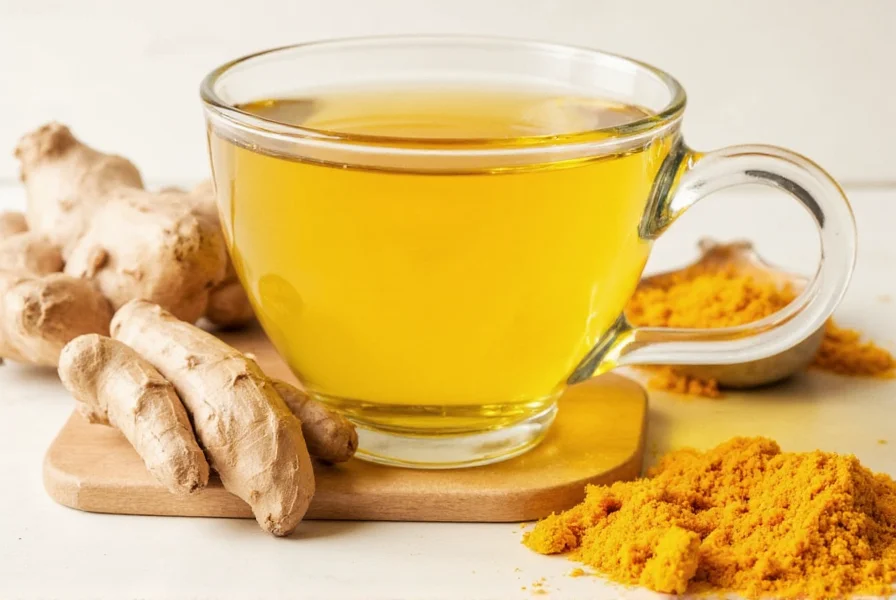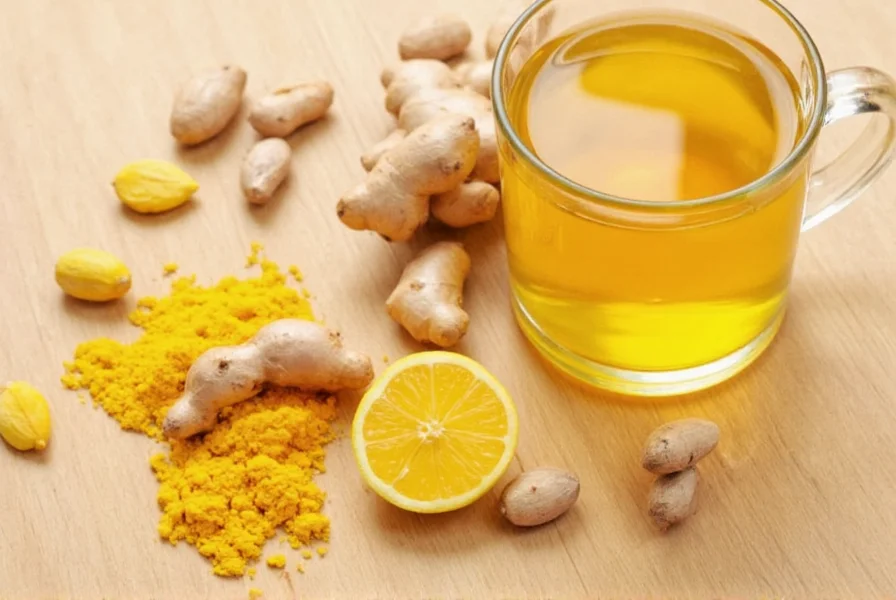For centuries, traditional medicine systems have utilized ginger and turmeric for their therapeutic properties. Modern research now provides scientific validation for many of these traditional uses, particularly when these botanicals are combined in tea form. This comprehensive guide examines the evidence-based benefits of ginger turmeric tea, preparation methods that maximize effectiveness, and important considerations for safe consumption.
The Science Behind Ginger and Turmeric
Ginger (Zingiber officinale) contains gingerols, the primary bioactive compounds responsible for its medicinal properties. Turmeric (Curcuma longa) features curcumin, which constitutes about 2-8% of the root and accounts for most of its health benefits. When combined in tea, these compounds create a synergistic effect that enhances their individual properties.
Research published in the Journal of Medicinal Food demonstrates that the combination of ginger and turmeric shows greater anti-inflammatory activity than either compound alone. This synergy explains why traditional preparations often combine these botanicals for maximum therapeutic effect.

Evidence-Backed Health Benefits of Ginger Turmeric Tea
Powerful Anti-Inflammatory Effects
Chronic inflammation underlies many modern health conditions. The anti-inflammatory properties of ginger turmeric tea have been extensively studied. A 2021 systematic review in Nutrients concluded that curcumin significantly reduces inflammatory markers like C-reactive protein and interleukin-6. Ginger compounds similarly inhibit inflammatory pathways.
For individuals seeking natural approaches to managing inflammation, regular consumption of properly prepared ginger turmeric tea may provide meaningful support. Understanding the anti-inflammatory properties of ginger turmeric tea helps explain its traditional use for various inflammatory conditions.
Digestive Health Support
Ginger has long been used to alleviate digestive discomfort. Clinical studies confirm ginger's ability to accelerate gastric emptying and reduce nausea. Turmeric supports digestive health by stimulating bile production, which aids fat digestion.
A randomized controlled trial published in Food Science & Nutrition found that participants who consumed ginger turmeric tea reported significantly less bloating and abdominal discomfort compared to the control group. This makes ginger turmeric tea for digestion an evidence-based option for those experiencing occasional digestive issues.
Joint Health and Mobility
Research suggests ginger turmeric tea may help maintain healthy joint function. A study in the Journal of Ayurveda and Integrative Medicine showed that participants with occasional joint discomfort who consumed turmeric and ginger extracts experienced improved mobility and comfort levels.
The combination appears particularly effective due to multiple mechanisms of action. While turmeric targets inflammatory pathways, ginger provides additional support through its own bioactive compounds. Those exploring turmeric and ginger tea for joint pain often report noticeable improvements with consistent consumption.
Antioxidant Protection
Both ginger and turmeric rank high on the Oxygen Radical Absorbance Capacity (ORAC) scale, indicating strong antioxidant capacity. Antioxidants neutralize free radicals that contribute to cellular damage and aging.
A comparative analysis in Antioxidants demonstrated that ginger turmeric tea provides a broader spectrum of antioxidant protection than either botanical alone. This comprehensive antioxidant profile represents one of the key health benefits of drinking ginger turmeric tea regularly.
| Benefit | Key Compounds | Scientific Support Level |
|---|---|---|
| Anti-inflammatory | Curcumin, Gingerols | Strong (Multiple RCTs) |
| Digestive Support | Gingerols, Turmerones | Moderate to Strong |
| Joint Health | Curcuminoids, Shogaols | Moderate |
| Antioxidant Protection | Various polyphenols | Strong |
Maximizing the Benefits: How to Prepare Effective Ginger Turmeric Tea
To maximize the health benefits of ginger turmeric tea, preparation matters significantly. Here's how to create a tea that optimizes bioavailability of the active compounds:
- Use fresh roots: Fresh ginger and turmeric contain higher concentrations of active compounds than powdered forms
- Add black pepper: Piperine in black pepper increases curcumin absorption by up to 2,000%
- Include healthy fat: Adding a small amount of coconut oil or ghee helps absorb fat-soluble compounds
- Simmer, don't boil: Gentle simmering for 10-15 minutes extracts compounds without degrading them
- Use filtered water: Avoid contaminants that might interfere with the tea's properties
For those interested in how to make ginger turmeric tea for immunity, consider adding lemon (for vitamin C) and a small amount of honey (for additional antioxidants). The best time to drink ginger turmeric tea varies by purpose—morning consumption may support digestion throughout the day, while evening consumption might promote relaxation.

Safety Considerations and Potential Interactions
Ginger turmeric tea is generally safe for most people when consumed in culinary amounts. However, certain considerations apply:
- Blood thinning effects: Both ginger and turmeric have mild anticoagulant properties. Those taking blood-thinning medications should consult their healthcare provider.
- Gallbladder issues: Turmeric may stimulate bile production, which could problematic for those with gallstones.
- Pregnancy: While culinary amounts are generally safe, medicinal quantities should be avoided during pregnancy without medical supervision.
- Surgery: Discontinue use at least two weeks before scheduled surgery due to potential bleeding risks.
Understanding potential side effects of ginger turmeric tea ensures safe consumption. Most adverse effects occur only with excessive consumption well beyond typical tea preparation amounts.
Limitations of Current Research
While promising, research on ginger turmeric tea has limitations. Most studies examine the isolated compounds rather than the tea preparation itself. Additionally, many studies use concentrated extracts rather than the amounts typically consumed in tea.
The scientific evidence for turmeric ginger tea benefits, while growing, should be viewed as complementary to conventional approaches rather than replacements for medical treatment. More research is needed specifically on the tea preparation method to determine optimal dosing and long-term effects.
Conclusion: Incorporating Ginger Turmeric Tea Into Your Wellness Routine
Ginger turmeric tea represents a time-honored tradition now supported by modern science. When prepared properly, it offers multiple health benefits with minimal risk for most individuals. The daily consumption of ginger turmeric tea can be a valuable addition to a holistic wellness approach, providing anti-inflammatory support, digestive benefits, and antioxidant protection.
As with any natural remedy, consistency matters more than intensity. Regular, moderate consumption yields better results than occasional large doses. Those exploring natural remedies with ginger turmeric tea should maintain realistic expectations while appreciating its potential contributions to overall wellness.











 浙公网安备
33010002000092号
浙公网安备
33010002000092号 浙B2-20120091-4
浙B2-20120091-4